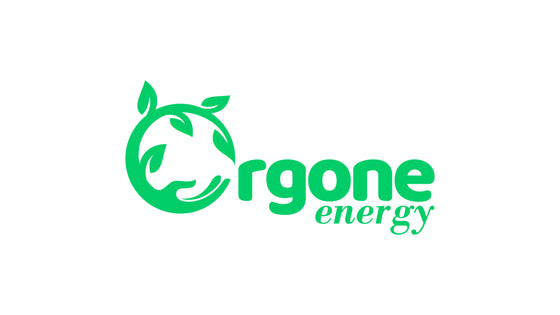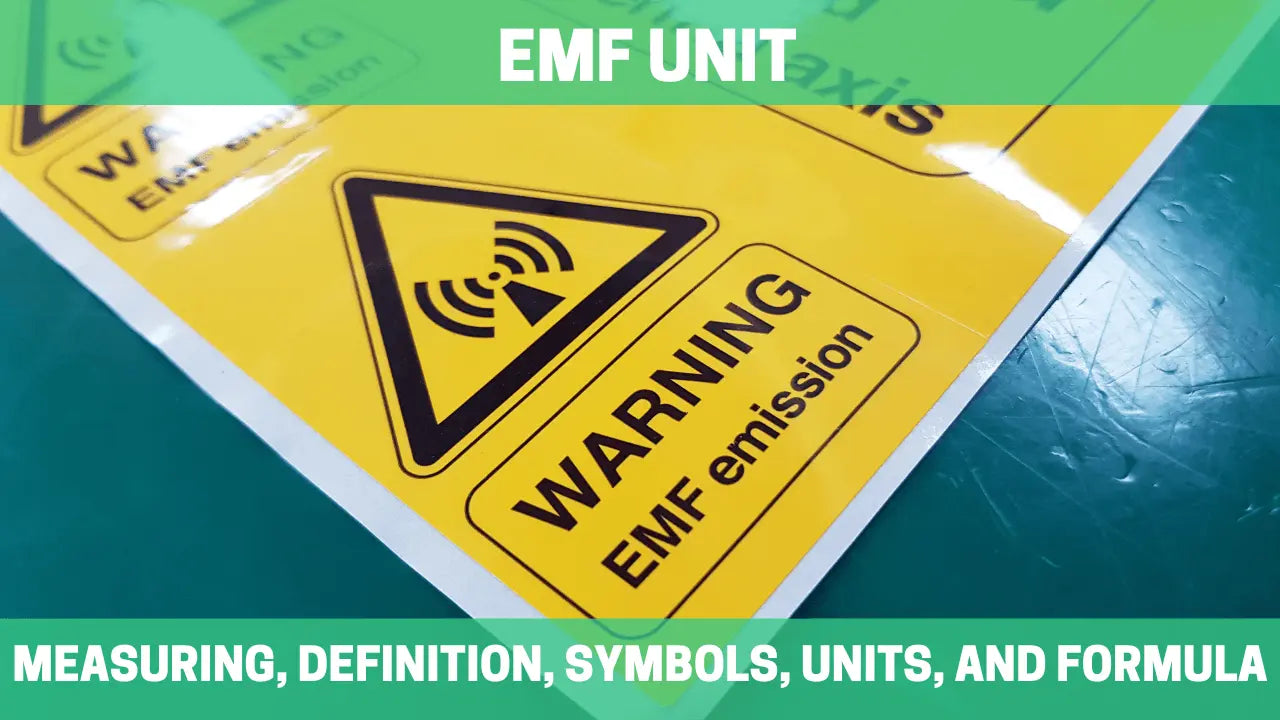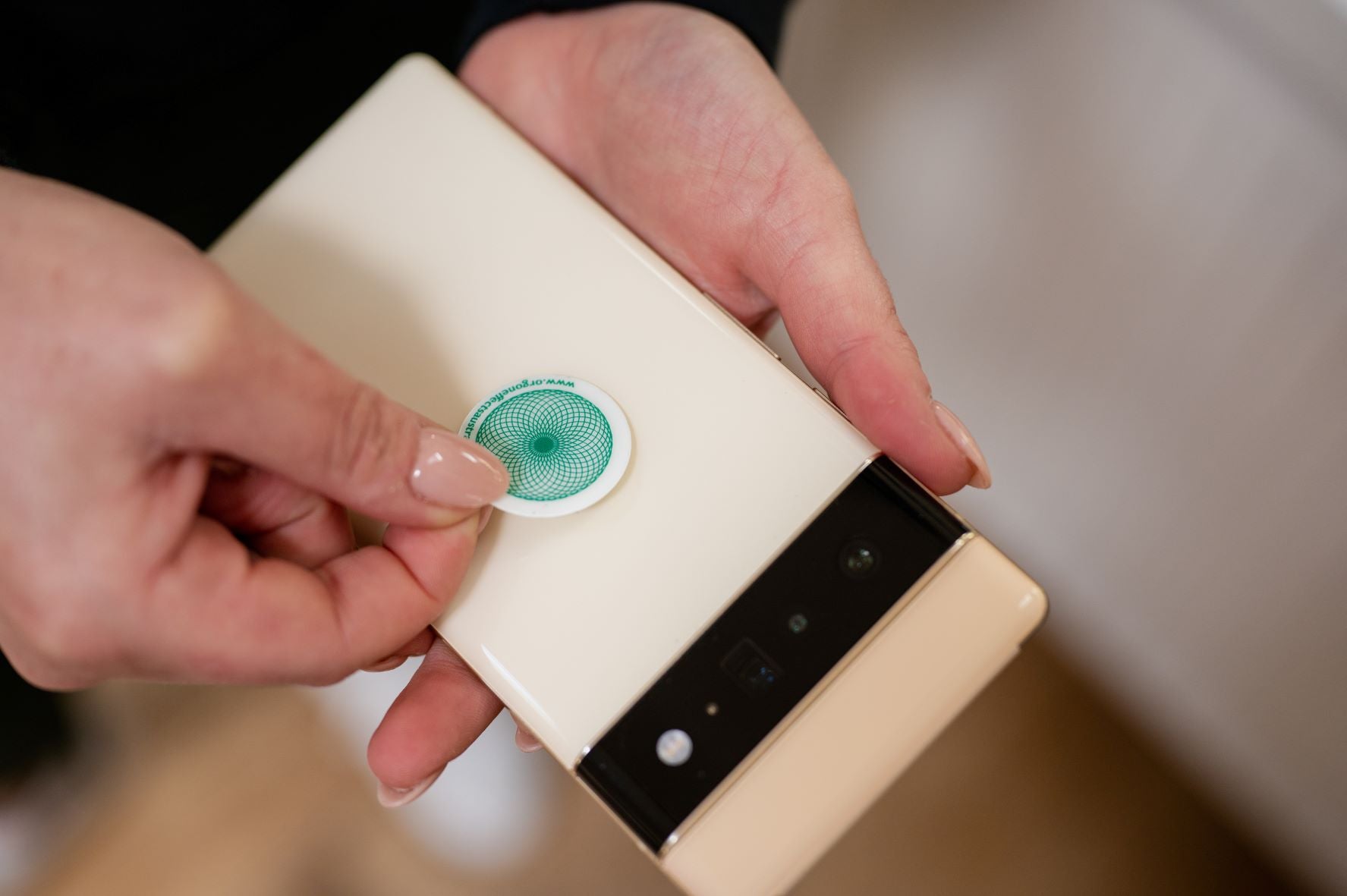Induction cooktops are a popular addition to many kitchens but they do produce EMF. Learn how to reduce EMF from induction cooktops.
Induction cooktops like Copper Chef, Cuisinart, and Duxtop are popular additions in many modern households. For a lot of people, they make cooking even more enjoyable by making cooking faster and making cleaning easier.
However, most people are unaware that their induction cooktop actually generates high levels of electromagnetic radiation when used.
In this article, we'll take a look at how and why induction cooktops emit non-ionizing electromagnetic radiation, and what can be done to protect you and your family from it. Before we go any further, we need to answer a few basic questions.
What is an Induction Cooktop?
Induction cooktops like Copper Chef, Cuisinart, and Duxtop are a type of stove that you can use to cook your food using electromagnetic energy – the same kind of energy used by microwave ovens to heat food. This kind of energy works by heating food inside out. Initially, induction cooktops were mainly used in restaurants and professional kitchens. Many chefs like to use induction hobs to prepare some of their best meals.
This is because induction cooking allows food to be heated extremely quickly while also offering precise heating control. Most cooktops consist of a high-performance glass surface.
Induction technology can heat a pan without heating the surroundings, making it more energy-efficient as little or no heat escapes into the room.
This is a great benefit for professional chefs as it is very important to keep the temperature in the restaurant cool. Many of these reasons have contributed to induction hobs gaining popularity in modern households.
How does an Induction Cooktop Work?

EMF radiation is divided into three main categories – radio frequencies, magnetic fields, and electric fields.
All electrical devices emit electrical and magnetic fields to an extent, but not all emit radio frequencies.
What are the Cause for Concern with Induction Stovetops?
Some examples of devices that give off radio frequencies are things like smart meters, wireless routers, and cell phones. Radio frequencies are the part of electromagnetic radiation that most people are familiar with, but that's not a problem with induction cooktops.
Electric fields are the first cause for concern. These arise from voltage differences in a device – higher voltage gives off a stronger electric field. Electric fields exist even when the device is not in use and remains constant all the time.
Magnetic fields are the other cause for concern. These occur when an electrical current flows through the appliance and in induction cooktops, they are the main means of heating the pan.
A magnetic field is influenced by the strength of the current – a strong current gives off a strong magnetic field. In contrast to electrical fields, magnetic fields are present only when the current is flowing and vary with energy consumption.
As you can imagine, the power consumption of a device like an induction cooker is quite high, which means the magnetic current is also high. This is made even more concerning by the fact that your body becomes part of the magnetic field every time the pan is touched.
Do Induction Cooktops Emit EMF?
Induction cookers like Copper Chef, Cuisinart, and Duxtop give off EMF radiation when in use, and exposure to this radiation can be dangerous if not handled correctly.
Induction cooktops give off a relatively high level of electromagnetic radiation and you are at a higher risk when you are close to the cooktop. However, proper equipment and distance can greatly reduce your risk.
Induction hobs have become very popular because they are incredibly fast and efficient for cooking food. In addition, they save a lot of energy compared to a conventional electric stove and can be equipped with many modern features.
A Great Electromagnet
In short, induction hobs are great electromagnets. Beneath the plate are coils of copper wire that become magnetic when current flows through them. Heat is a by-product of this process, but it is obviously very helpful in this situation.
When you place a pan on the induction ring, it becomes part of the electromagnetic circuit. For this reason, manufacturers recommend using only steel or alloy steel pots, as they are the most conductive when using an induction cooktop.
The pan heats up very quickly due to the electromagnetic circuit. This, invariably, means that your food will heat up very quickly, which is of course very convenient. However, the potential health effects of using an induction cooker should also be considered.
One of the biggest concerns about using an induction cooktop is the fact that when the pan is touched, the body is also part of the cycle. Although this process sends only a small amount of electromagnetic radiation to the body, it is likely more than acceptable.
Ambient Electrical Radiation
In addition to this direct contact with an electromagnetic circuit, ambient electromagnetic radiation must also be taken into account. As with all electrical appliances, induction cookers generate ambient electromagnetic radiation when in operation and a small amount when not in use.
Electrical devices that contain heating elements have very high power requirements, as heating metal in this way is not a very efficient process. Consequently, some devices generate high levels of EMF radiation when powering their heating element. As you can imagine, an induction cooktop is no exception.
However, just like many electronic appliances, induction cookers have not been around long enough to really understand the long-term health effects.
But if you know the potentially harmful effects of electromagnetic radiation, you should use these types of devices with caution.
Protect Yourself From EMF

EMFs truly cannot be avoided in the modern world. While we may do our best to avoid exposure, there is no substitute for EMF protection.
At Orgone Energy we offer a wide range of EMF protection products to neutralize the potentially harmful positive ions emitted by EMF.
With a wide range of products to protect you at home, work and on the go, Orgone Energy is a great option to protect your entire family.
A great option for whole home protection is the Geoclense EMF and Earth Radiation Harmoniser.

The Geoclense Orgone Negative Ion Generator consistently generates healthy beneficial Negative ions that harmoniously neutralize your entire property and home. This counteracts each one of these destructive energies such as radiation and electromagnetic frequencies.
Are Induction Cooktops Dangerous?
When it comes to the real safety of induction cookers, this is still something up in the air. After all, there are few conclusive studies on the long-term effects of electromagnetic radiation, let alone the problems associated with something like a cooktop. Most people tend to focus on appliances like smart meters and cell phones.
The hazards of electromagnetic radiation depend on the intensity of the radiation and the duration of exposure.
While actual levels of EMF radiation vary between manufacturers and even between models, it is fair to say that induction cooktops emit relatively high levels of electromagnetic radiation.
However, it is also worth noting that most people won't be around an induction cooker for that long. Even if you are cooking something complicated, the time you spend in front of the pan will not exceed a few hours.
If you compare that to other devices that we may have with us around the clock, such as mobile phones, induction cooktops suddenly seem less dangerous.
In addition, this is not the most potentially dangerous form of electromagnetic (radiofrequency) radiation.
However, induction cooktops deserve some caution as it is a fairly new technology. If you only use it for one hour or two, then you don't have to be too worried. However, if you are a chef, there might be a few changes you should make to your cooking practice.
How to Reduce or Block EMF from Induction Cooktops

If you already have an induction cooker in your home and are now concerned about electromagnetic radiation – do not worry. There are many things that you can do to reduce the possible dangers. Also, if you are considering buying an induction cooktop, here are some tips that you should keep in mind before doing so.
Choose the Right Cooking Pans

To begin with, it can be difficult to purchase the right pans for your induction cooktop, as manufacturers are not very specific about which types are ideal. Add to this the idea of choosing the right handles and you may have three options to select from.
However, it is very important to have the correct handles for your metal pots. Most of them, strangely enough, come with metal handles. Metal handles are excellent conductors of both electricity and heat.
If you can purchase a set of cooking pans with insulated handles, you have possibly solved the problem already. Most heat-insulating materials also have some electrical insulation, but look out for this property.
Alternatively, if you don't want to go through the hassle of buying a new pan set, look for handle isolators. These are fairly inexpensive and available at most kitchen stores.
The Benefits of Silicone
By far the best material is silicone. Silicone is an excellent thermal insulator, which makes it very popular for this type of application. It can also be made as an electrical insulator or conductor and is ideal for both.
In the case of pot handle insulators, silicone is most likely also electrically insulating. This makes it a safe and convenient option for breaking the barrier between your body and the electric circuit and eliminating most of the problems associated with using induction cookers.
Avoid Using Metal Utensils
The most important thing, besides the pan, is what kind of utensil you use.
It's not uncommon for people to use metal utensils to stir food, but this should be avoided as much as possible.
This is because metal utensils can damage nonstick coatings, even on the most expensive pans). In general, metals are very conductive. Since most utensils are likely to be stainless steel, as it is a practical metal, it is also the same material used for pots and pans. Remember how we noted that you have to use these pans because metal is so conductive?
The same goes for utensils, meaning that every time your food is stirred on an induction cooker, you are joining the electric circuit, even if you are not directly touching the pan. Fortunately, this is pretty easy to fix.
The most obvious option is to use wooden or plastic utensils, as they do not conduct electricity. Otherwise, use metal utensils with silicone or plastic handles, as they will do the same job, too.
This will not only break the magnetic circuit but will also reduce the risk of burns if the spoon is left in the pan.
Choose another Type of Cooker
If you have not bought an induction cooktop yet, but have thought about it, consider all your options before making a purchase. Induction cookers may be popular, but that doesn't mean they are perfect for your needs.
In our opinion, and in the opinion of many chefs, a gas stove really is unbeatable. They tend to heat up fairly fast, give you a better direct heat, and you aren’t limited by the type of pots you can use.
However, because the technology is so much simpler, they are sometimes inexpensive to purchase. However, choosing between an induction cooktop like Copper Chef, Cuisinart, and Duxtop and a traditional electric cooker is difficult. Eventually, they both consume electricity, which brings back the element of electromagnetic radiation. So which one is the best?
In terms of cooking speed and energy efficiency, induction cookers are unfortunately winning. They represent the latest development in cooking technology and can be considered as a mobile phone compared to the conventional electric stove.
Electric cookers work with ceramic glass cooktops or heating coils. Both work on a similar principle of passing a current through the coil to heat it, but unlike induction cookers, they do not do so by producing a magnetic field.
This means that you can use as many pans as you like, but it also means that the process will not be as efficient as an induction cooktop. If you opt for an electric cooker, opt for a glass-ceramic, because it is a good compromise.
In this situation, weighing the pros and cons of induction and electric hobs is not worth it. After all, they both generate electromagnetic radiation, which is our concern here, so it is not worth digging too deep.
If you are looking to purchase a new cooker and are concerned about induction cookers, stick with a gas cooker. You really can't go wrong with this. In fact, the best combination is an electric oven and a gas cooker because you don't need to stay near the oven when you are not using it.



